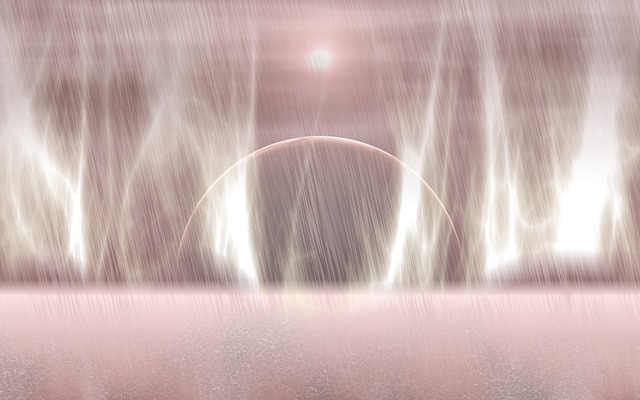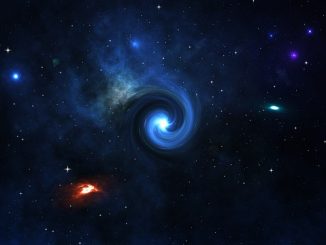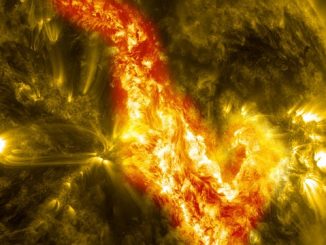
The Kuiper Belt — located beyond Neptune and extending up to a distance about 55 times farther from the Sun than the Earth — is home to a diverse population of space rocks, minor planets, dwarf planets and all other kinds of bodies left over after our solar system was formed (called Kuiper Belt objects or KBOs). Typically, these KBOs orbit the sun with a specific tilt or inclination, averaging out to what is referred to as the ‘invariable plane of the solar system’. In other words, the angles at which they tilt are pretty much predictable after considering the gravitational effects of the larger orbiting planets.
As recently discovered by Kat Volk and Renu Malhotra of the University of Arizona’s Lunar and Planetary Laboratory (LPL), the most distant KBOs appear to have their own way of tilting. In fact, they’re tilted away by an estimated 8 degrees from the ‘invariable plane’, which suggests that something is meddling with our outer solar system’s average orbital plane. And it’s not just ‘something’. To cause that kind of warp, that something has to be of considerable mass — at least as massive as our planet or Mars.
Of course, an unseen planet or planetary mass is just one of the explanations for the unexpected warping. Another possibility is that a passing star could have caused it. But since such an effect should have been erased after the star had passed, the scenario is quite unlikely, especially because there’s no evidence pointing to a star that has passed the location within an amount of time that would make its presence felt up to now.
There’s also the possibility that the warping is just a fluke. But the measurements and calculations done by Volk and Malhotra do show that there’s real warping present, which means the possibility of a fluke is quite minimal.
Could we be on the verge of finding Planet Ten? It can’t be Planet Nine because that distinction is already reserved for the Neptune-sized body discovered last year orbiting the sun beyond Pluto. So if the massive object causing the warp does turn out to be a planet, then it will be Planet Ten, and it would be located at roughly 55 AU. AU stands for astronomical unit and 1 AU is equivalent to distance between the Earth and the sun, approximately 93 million miles or 150 million km. It would be much more logical for Planet Ten to be causing the warp rather than Planet Nine which is located too far away (about 500 – 700 AU) to have such a noticeable effect.
Still, there’s much more work and research to be done before a new planet can be declared. And in this case, the possibility that more than one massive object is causing the warp has to be considered as well.
In the meantime, there’s a lot more riding on the completion of the Large Synoptic Survey Telescope which is hoped to show us more of the solar system and maybe more new planets waiting to be discovered.
Volk and Malhotra’s work was recently published in the Astronomical Journal.
- Bulenox: Get 45% to 91% OFF ... Use Discount Code: UNO
- Risk Our Money Not Yours | Get 50% to 90% OFF ... Use Discount Code: MMBVBKSM
Disclaimer: This page contains affiliate links. If you choose to make a purchase after clicking a link, we may receive a commission at no additional cost to you. Thank you for your support!




Leave a Reply